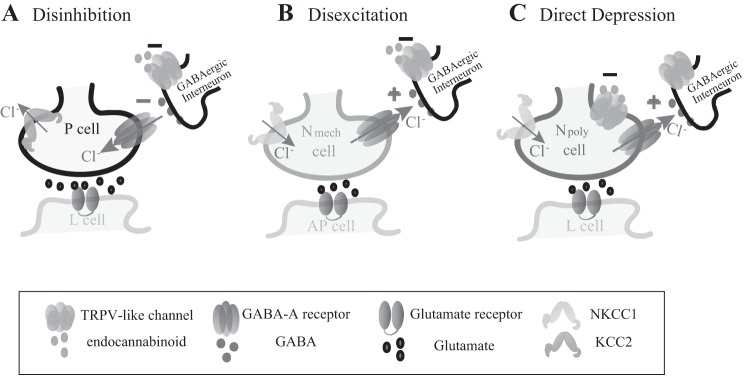Fig. 6.
Diagram illustrating the three mechanisms of which endocannabinoids modulated synaptic transmission. All sensory neurons receive tonic GABAergic input from an unknown interneuron that has an inhibitory effect on P synapses and an excitatory on Npoly and Nmech synapses based on (Wang et al. 2015). The Npoly cell is of transient potential receptor vanilloid (TRPV) positive, while the P and Nmech neurons are TRPV negative (Pastor et al. 1996; Summers et al. 2014). A: endocannabinoids depress inhibitory GABAergic input to the P cell, increasing P glutamatergic transmission via a disinhibition mechanism that is dependent on activity of a KCC2-like Cl− exporter. B: endocannabinoids depress exhibitory GABAergic input to the Nmech cell, decreasing Nmech glutamatergic transmission via a disexcitation mechanism that is dependent on activity of a NKCC1-like Cl− importer. C: endocannabinoids depress the Npoly synapses directly via activation of their TRPV channels (Yuan and Burrell, 2010, 2012, 2013a,b). Although endocannabinoids presumably depress excitatory GABAergic input to the Npoly neurons, this did not appear to affect Npoly synapses.

